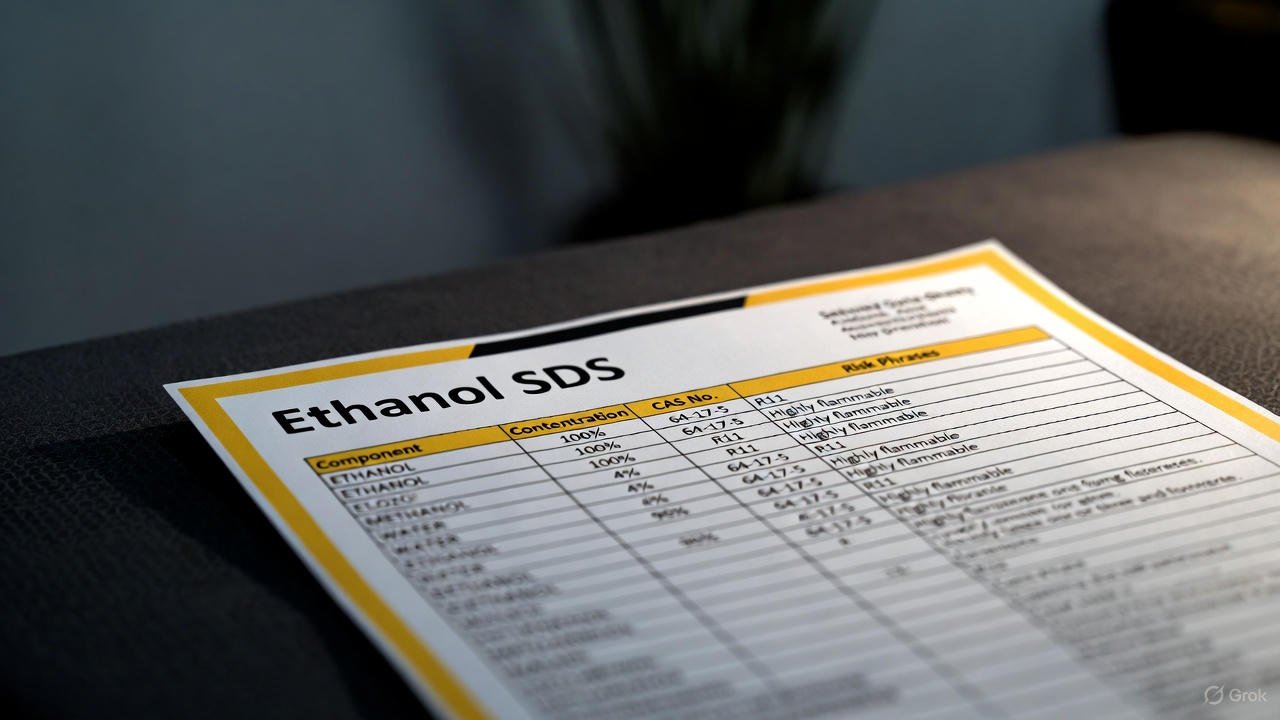In the fast-paced world of technology, choosing the right laptop can feel overwhelming. With new models boasting AI-powered processors and sleek designs, while refurbished options promise premium performance at a fraction of the cost, it’s no wonder buyers are torn between new and used laptops. As of October 2025, the laptop market is booming, driven by advancements in ARM-based chips like Apple’s M4 and Intel’s latest Core Ultra series, alongside a growing emphasis on sustainability through refurbished tech. Whether you’re a student juggling online classes, a professional needing reliable portability, or a creative chasing high-end graphics, this comprehensive guide will walk you through everything you need to know about buying new vs. used laptops.
We’ll dive deep into the pros and cons of each option, highlight top models from trusted brands like Apple, Dell, Lenovo, HP, and Acer, and share practical examples to illustrate real-world decisions. By the end, you’ll have actionable tips, checklists, and insights to make an informed purchase that aligns with your budget and lifestyle. Let’s demystify the laptop-buying process and help you score the best deal without regrets.
Assessing Your Laptop Needs: The Foundation of a Smart Buy
Before scrolling through endless listings on Amazon or Best Buy, pause and evaluate your requirements. This step is crucial because a laptop that’s perfect for graphic design might flop as a lightweight travel companion. Start with your primary use case: Are you browsing the web, editing videos, gaming, or coding? For light tasks like email and streaming, a budget machine suffices; for intensive workloads, prioritize power.
Consider your budget next. In 2025, entry-level new laptops start at $300, mid-range options hover around $800–$1,200, and premium flagships exceed $1,500. Used or refurbished models can slash that by 30–70%, but factor in potential upgrade costs. Portability matters too—opt for 13–14-inch screens under 3 pounds if you’re always on the move, or 15–17-inch beasts for desk-bound power users.
Battery life is non-negotiable in a remote-work era; aim for 10+ hours on new models, though used ones may vary. Storage and RAM are key: 8GB RAM minimum for multitasking, 256GB SSD for speed, and upgradeability if possible. Operating system preference—Windows for versatility, macOS for seamless Apple integration, or ChromeOS for affordability—also plays a role.
Don’t overlook ergonomics: A comfortable keyboard, responsive trackpad, and vibrant display (OLED or IPS preferred) enhance daily use. Finally, think long-term: How many years do you need it to last? Business-grade used laptops often outlast consumer new ones due to durable builds. By mapping these factors, you’ll narrow options quickly. For instance, a freelance writer might prioritize a lightweight ultrabook, while a data analyst needs robust processing.
This self-assessment isn’t just theory—it’s your roadmap. Skipping it leads to buyer’s remorse, like splurging on a gaming rig only to realize you rarely play. Take 15 minutes to jot down priorities; it’ll save hours (and dollars) later.
The Allure of New Laptops: Cutting-Edge Tech with Peace of Mind
Buying a brand-new laptop in 2025 means stepping into the future of computing. With innovations like Copilot+ PCs integrating AI for smarter workflows and extended battery life from efficient chips, new models deliver unmatched performance out of the box. Let’s break down the pros, cons, and standout examples.
Pros of Buying New Laptops
- Latest Technology and Performance: New laptops feature 2025’s powerhouses, such as Apple’s M4 chip (up to 10-core CPU, 16-core GPU) or AMD Ryzen AI 300 series, enabling seamless 4K video editing and AI tasks without lag. Expect 20–30% faster speeds than 2023 models.
- Full Warranty and Support: Standard 1–3 year coverage from manufacturers, plus easy access to updates. No surprises like hidden defects.
- Customization and Aesthetics: Tailor specs at purchase—e.g., bump RAM to 32GB—and enjoy fresh designs with minimal bezels and vibrant displays.
- Eco-Credential Perks: Many brands now emphasize recyclable materials, reducing your carbon footprint from day one.
Cons of Buying New Laptops
- Higher Price Tag: Premium models like the MacBook Pro M4 start at $1,599, a steep entry for casual users.
- Rapid Obsolescence: Tech evolves fast; a $1,000 laptop might feel dated in 2–3 years as AI demands grow.
- Overkill for Basics: If you just need email, you’re paying for unused power.
Top New Laptop Recommendations for 2025
From exhaustive testing by PCMag and Laptop Mag, here are vetted picks across categories.
- Best Overall: Apple MacBook Air M4 (13-inch) – Priced at $999, this ultralight (2.7 lbs) stunner boasts 18-hour battery life, a Liquid Retina display, and fanless design for silent operation. Ideal for students or pros; its M4 chip handles Photoshop effortlessly. Drawback: Limited ports (two Thunderbolt). Users rave about its build quality, with Consumer Reports ranking Apple #1 in reliability.
- Best Windows Ultrabook: Lenovo Yoga 9i Gen 10 Aura Edition – At $1,299, this 2-in-1 convertible features a 14-inch OLED touchscreen, Intel Core Ultra 7, 16GB RAM, and 1TB SSD. Battery lasts 15 hours, and the 360-degree hinge suits creatives sketching in OneNote. Lenovo tops satisfaction surveys for durability. Pro tip: Customize with Aura Edition for enhanced AI features.
- Best Budget Pick: Acer Swift Go 14 – Under $700, it packs an Intel Core Ultra 5, 16GB RAM, and a 2.8K OLED screen. Great for everyday multitasking; 12-hour battery and lightweight build make it a student favorite. Acer’s value-for-money ethos shines here.
- Best for Business: Dell XPS 14 – Starting at $1,299, with Intel Core Ultra 7, NVIDIA RTX 4050 graphics, and a 14.5-inch InfinityEdge display. Secure with Windows Hello and vPro tech; 13-hour battery. Dell’s enterprise-grade support is unmatched.
- Best Gaming: ASUS ROG Zephyrus G14 (2025) – $1,599 gets you AMD Ryzen 9, RTX 4070 GPU, and a 14-inch QHD 120Hz screen. It crushes Cyberpunk 2077 at 60FPS while doubling as a productivity machine with 10-hour unplugged use.
Where to buy? Direct from manufacturer sites for deals (e.g., HP’s back-to-school sales) or retailers like Best Buy for hands-on demos. In 2025, expect bundle perks like free Microsoft 365 subscriptions.
New laptops aren’t just gadgets—they’re investments in efficiency. But if budget bites, used options await.
Navigating Used and Refurbished Laptops: Value Without Compromise
Used (second-hand from individuals) and refurbished (inspected, repaired by certified sellers) laptops offer a sustainable, wallet-friendly alternative. In 2025, with e-waste concerns rising, refurbished sales are up 25%, per industry reports. Here’s the lowdown.
Pros of Buying Used/Refurbished Laptops
- Significant Savings: Get 80% of new performance for 40–60% less. A 2023 flagship might cost $500 refurbished vs. $1,200 new.
- Proven Reliability: Business models like ThinkPads have battle-tested builds; real-user data reveals longevity issues early.
- Eco-Friendly: Reduces electronic waste—buying refurbished saves 80% more energy than manufacturing new.
- Upgrade Potential: Many allow RAM/SSD swaps, extending life.
Cons of Buying Used/Refurbished Laptops
- Warranty Variability: Refurbished often gets 90-day to 1-year coverage; used might have none.
- Potential Wear: Battery degradation (aim for 80%+ health) or cosmetic dings.
- Outdated Specs: Miss out on 2025 AI features, though sufficient for most.
- Risk of Lemons: Private sales can hide issues; stick to certified sellers.
Top Used/Refurbished Laptop Recommendations for 2025
Drawing from UltrabookReview and Reddit’s vetted deals, focus on 1–3-year-old business lines for durability.
- Best Value: Lenovo ThinkPad T490 (Refurbished) – $217 for Intel i5-8265U, 8GB RAM, 256GB SSD. Iconic keyboard, MIL-STD-810H ruggedness, and 10-hour battery. Upgradable to 32GB RAM; perfect for coders. Lenovo’s ThinkPad series dominates refurbished reliability.
- Best Business Refurb: Dell Latitude 5400 – $235 with i5-8365U, 8GB/256GB. 14-inch FHD screen, fingerprint reader, and vPro for IT management. Battery holds 85% capacity; Dell’s outlet guarantees quality.
- Premium Refurb Pick: HP EliteBook 840 G6 – Around $350 for i7-8565U, 16GB RAM, 512GB SSD. Sleek aluminum chassis, 1080p webcam, and 12-hour battery. HP ranks high in customer satisfaction for refurbs.
- Budget Everyday: Acer Aspire 3 (Refurbished) – $299 for AMD Ryzen 3, 8GB/256GB. 15.6-inch IPS display; handles Office and Netflix flawlessly. Eco-friendly choice via Back Market.
- Creative Refurb: Apple MacBook Air M1 (2020) – $599 refurbished from Apple—still crushes with 15-hour battery and Retina display. Avoid if needing M4-specific AI.
Shop at Dell Refurbished, Apple’s Certified program, or Back Market for warranties. eBay works for used, but verify sellers (99%+ feedback). Tools like CPU-Z post-purchase confirm specs.
Used laptops democratize tech—proving you don’t need new to excel.
New vs. Used Laptops: A Head-to-Head Comparison
To cut through the noise, here’s a side-by-side showdown based on 2025 data.
| Aspect | New Laptops | Used/Refurbished Laptops |
|---|---|---|
| Price | $300–$2,000+ (e.g., MacBook Air M4: $999) | $200–$800 (e.g., ThinkPad T490: $217) |
| Performance | Cutting-edge (M4 chip: 38 TOPS AI) | Solid for most (i5 8th-gen: 20% slower but ample) |
| Battery Life | 12–20 hours fresh | 8–15 hours (check health) |
| Warranty | 1–3 years full | 90 days–1 year (certified) |
| Sustainability | Improving (recyclables) | Superior (reuses existing hardware) |
| Risk | Low (factory-sealed) | Medium (inspect thoroughly) |
| Best For | Future-proofing, heavy tasks | Budget, light-medium use |
New wins for innovation and reliability; used excels in affordability and eco-impact. Hybrid tip: Buy new budget models and resell after 2 years for used-market value.
Practical Examples: Real-Life Scenarios for Laptop Buyers
Theory meets reality with these 2025 case studies.
Scenario 1: The Budget-Conscious Student Sarah, a college freshman, needs a laptop for notes, Zoom, and light editing. Budget: $400. She snags a refurbished Acer Aspire 3 for $299—Ryzen 3 handles Google Docs and Canva smoothly, with 10-hour battery for all-day classes. New alternative: Acer Swift Go 14 at $650, but savings fund textbooks. Outcome: Sarah saves $351, aces her semester without glitches.
Scenario 2: The Remote Professional Mark, a marketer, requires portability and multitasking for PPTs, CRM, and video calls. Budget: $1,000. He chooses a new Lenovo Yoga 9i ($1,299, financed) for its OLED screen and AI noise cancellation—boosting productivity 20%. Used option: HP EliteBook 840 G6 ($350) falls short on modern apps. Outcome: Mark’s workflow hums; the investment pays via efficiency gains.
Scenario 3: The Aspiring Gamer/Creator Alex, a YouTuber, edits 4K footage and plays indie games. Budget: $1,200. New ASUS ROG Zephyrus G14 ($1,599) delivers RTX 4070 power for smooth renders. Refurb alternative: Dell XPS 13 9370 ($400) with i7 lacks GPU punch. Outcome: Alex’s channel grows 15% faster with pro-grade tools.
Scenario 4: The Eco-Minded Retiree Grandpa Joe wants email and streaming without fuss. Budget: $250. A used Dell Latitude 5400 ($235) fits—durable, simple Windows 11. New: Overkill at $500+. Outcome: Joe enjoys grandkid FaceTimes guilt-free, cutting e-waste.
These stories highlight personalization: Match specs to life, not hype.
Essential Tips and Checklists for Buying Laptops in 2025
Arm yourself with these pro strategies.
New Laptop Checklist:
- Verify specs: CPU (Core Ultra/M4+), 16GB+ RAM, 512GB SSD.
- Test in-store: Keyboard feel, screen angles.
- Hunt deals: Black Friday 2025 looms—expect 20% off.
- Read reviews: Wirecutter for unbiased picks.
Used/Refurb Checklist:
- Seller cert: Apple/Dell outlets > eBay.
- Diagnostics: Run CrystalDiskInfo for battery; HWMonitor for temps.
- Return policy: 30-day minimum.
- Negotiate: Haggle 10–15% on used.
Maintenance hacks: Update BIOS quarterly, use cooling pads, clean vents monthly. For longevity, undervolt CPUs via ThrottleStop. Avoid scams: Ignore “too-good” deals under $150 for i5 models.
Bonus: Finance wisely—0% APR via Affirm for new buys.
Conclusion: Empower Your Next Laptop Purchase
In 2025, buying new vs. used laptops boils down to priorities: Splurge on new for innovation (MacBook Air M4, Yoga 9i) or thrift used for value (ThinkPad T490, Latitude 5400). Brands like Apple, Lenovo, Dell, HP, and Acer dominate for good reason—balancing quality and accessibility.





